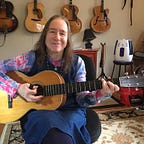Bill Graham and the Rock and Roll Revolution
May 18, 1968. During my first visit to the East Village, my father drives the car down St. Marks’s Place where colorful beings in perpetual motion pack both sides of the street. We see nomads and angels, souls on the fringe, the newly awakened, and a few aliens. The Electric Circus gives off a purple glow, and on a stoop a few doors down, young people are drumming energetically on metal garbage can lids. At the corner of Second Avenue, we make a right. I can already see the marquee that reads “Byrds, Tim Buckley, Foundations.” We’re heading to a theater called The Fillmore East, a venue that opened just two months earlier. Jimi Hendrix played there last week, and next week Ravi Shankar is the headliner. I’m only a month away from my fourteenth birthday, the end of another school year, and my graduation from grammar school. None of that matters tonight though. All that’s important is what surrounds me right now. Whether mainstream America is willing to acknowledge it or not, our country is in the middle of a cultural revolution. A key player in the nation’s artistic transformation is 37-year-old music impresario Bill Graham. A more fitting catalyst would have been hard to find.
Bill Graham was born Wulf Wolodia (Wolfgang) Grajonca in Berlin in 1931 to Russian Jewish parents. Two days after his birth, his father died as a result of an accident, and his mother was…
